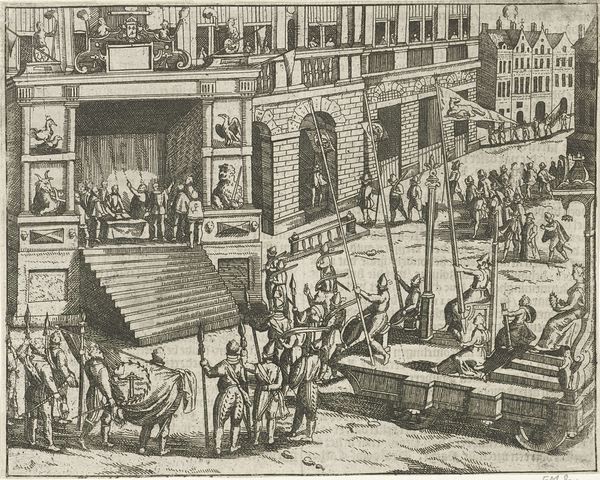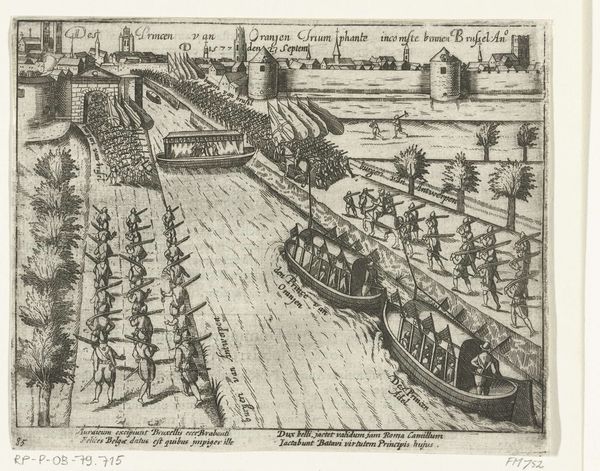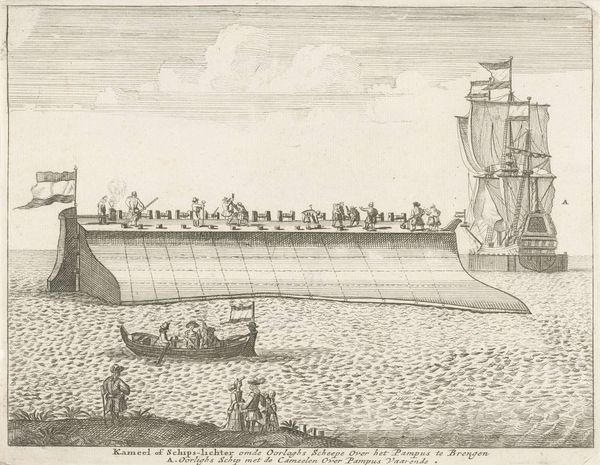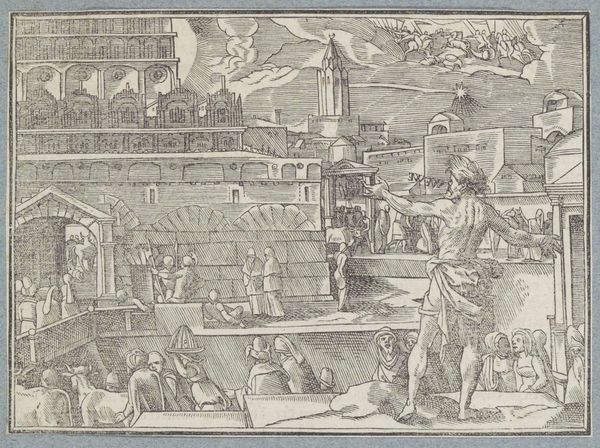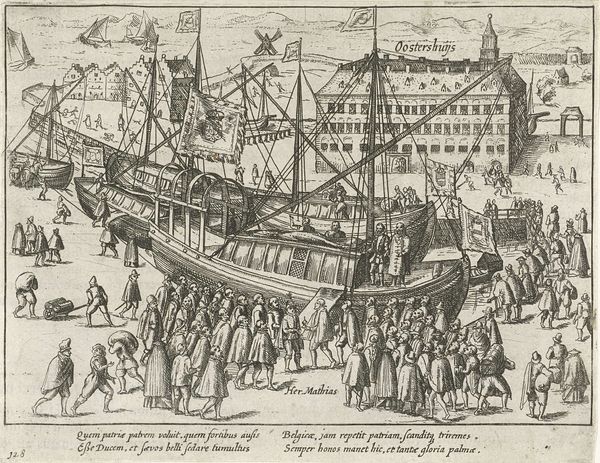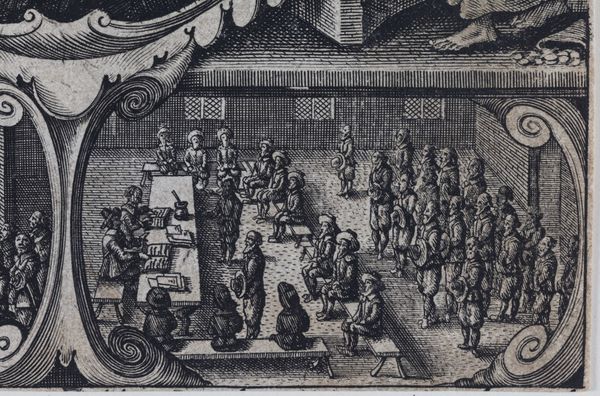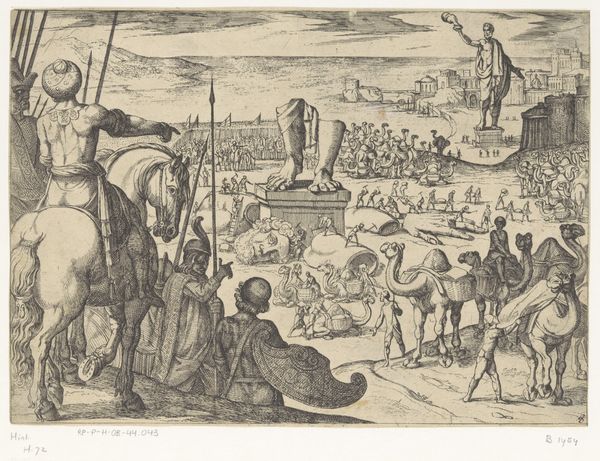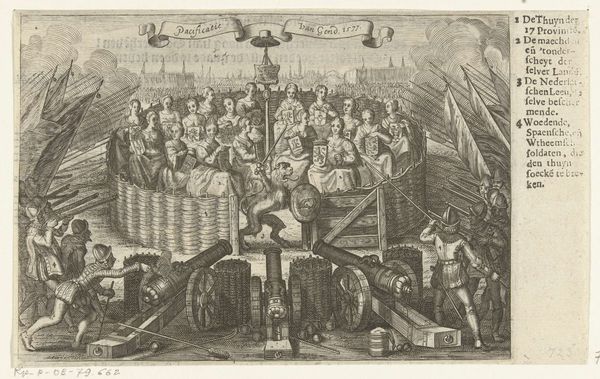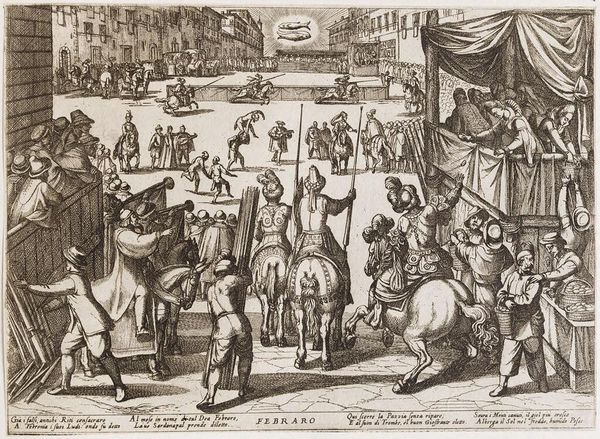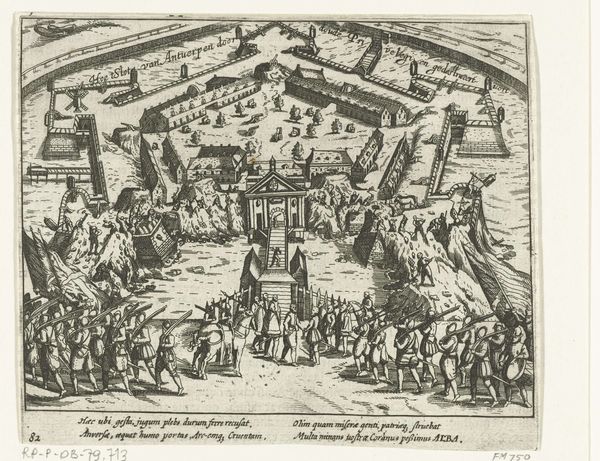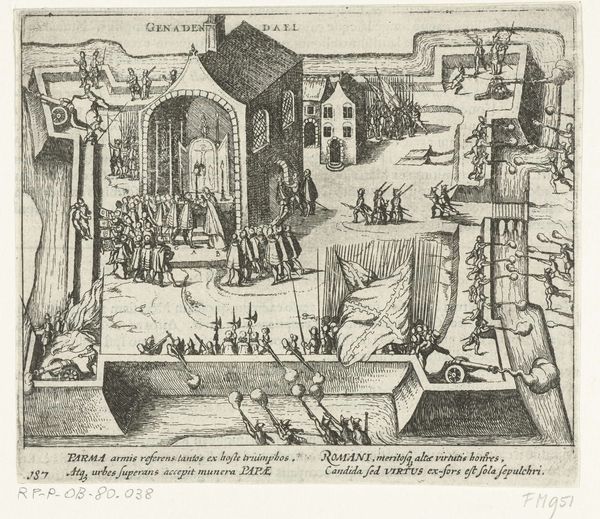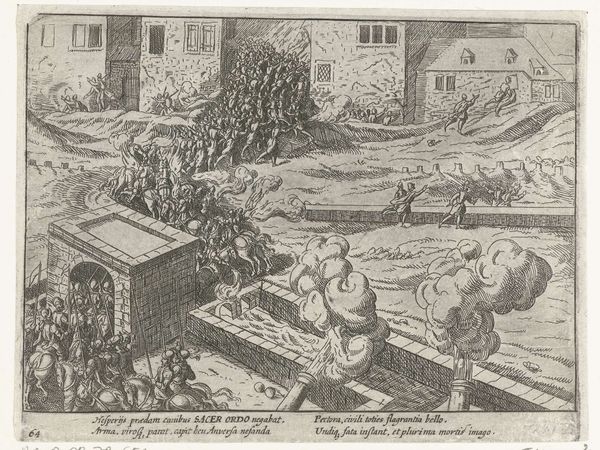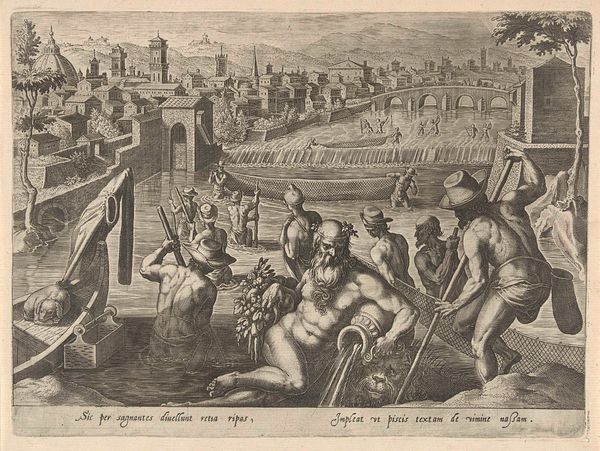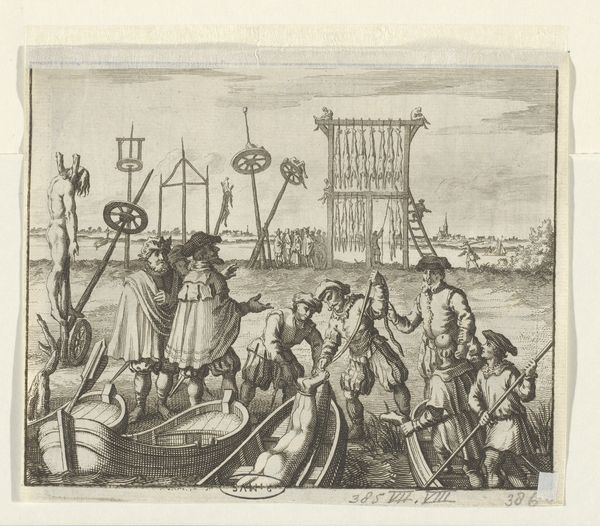
print, engraving
#
baroque
# print
#
asian-art
#
line
#
cityscape
#
genre-painting
#
history-painting
#
engraving
#
realism
Dimensions: height 187 mm, width 420 mm
Copyright: Rijks Museum: Open Domain
Editor: Here we have a print called "Bazaar van Bantam, 1596," created anonymously sometime between 1597 and 1646. It's an engraving showing a bustling marketplace. I’m struck by how meticulously detailed it is; what's your take on this piece? Curator: It's a fascinating image, isn't it? For me, this print serves as a powerful visual document of early globalization and colonialism. Look closely—what do you notice about the depiction of the people and the goods being traded? Editor: Well, it looks pretty diverse, lots of different activities…and the architecture seems like a mix of styles? Curator: Precisely. This is Bantam, in Java, a major trading hub. Consider who created this image and for what purpose. The anonymous artist was likely European, commissioned to document—and perhaps subtly promote—Dutch mercantile activity in the East Indies. How might that influence what is being shown, and even more importantly, what isn't? Editor: So it's not just a straightforward depiction of a marketplace? It has a perspective baked into it? Curator: Exactly. Think about the power dynamics at play. This image, made for a European audience, potentially exoticizes the East while subtly legitimizing colonial presence. The “bazaar” itself becomes a site where cultural exchange is also, inescapably, a form of conquest. Editor: I never thought about it that way. I guess seeing something that looks so "matter of fact" could actually be promoting a particular ideology. Curator: It’s a vital point to remember: that images always carry their own histories, biases and positionalities. Looking at it this way pushes us to really investigate the relationship between art and its role in wider power structures. Editor: I’m going to spend a lot more time considering the perspective behind historical artwork from now on. Thanks for highlighting that.
Comments
No comments
Be the first to comment and join the conversation on the ultimate creative platform.
